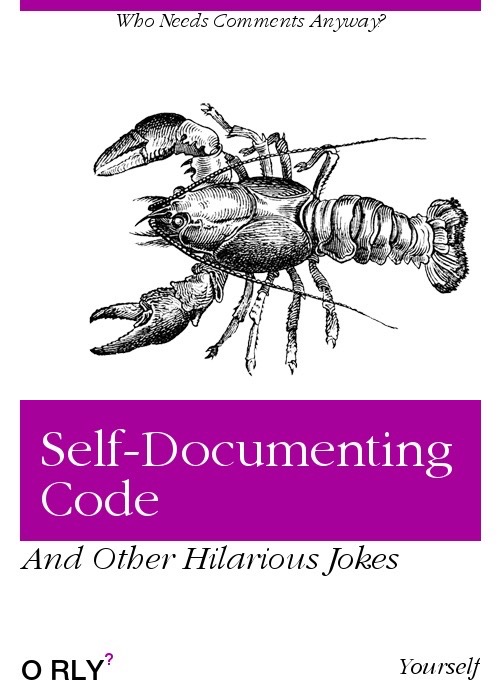
In the sprawling expanse of Codetopia, a realm where elegant algorithms and ingenious solutions are the currencies of respect and success, there emerged a doctrine as polarizing as it was ambitious: "Self-Documenting Code." This principle, championed by a sect of developers who viewed their craft as the highest form of art, posited a world where code was so clear, so intuitive, that it required no external commentary. "Who needs comments anyway?" became their battle cry, a testament to their belief in the purity of code unmarred by the clutter of annotations.
At the heart of this narrative is Taylor, a coder of considerable skill and an ardent believer in the philosophy of self-documenting code. Taylor, whose creations in the digital tapestry of Codetopia were as elegant as they were efficient, embarked on a crusade to demonstrate the viability and virtue of code that explained itself.
Armed with a zealot's fervor, Taylor set about crafting their magnum opus, a project that would epitomize the principles of self-documenting code. Variable names were chosen with the care of a poet selecting the perfect word, each function was a model of single responsibility, and the flow of logic was as graceful and inevitable as the course of a river.
As Taylor's project neared completion, a sense of triumph swelled within them. The code stood as a testament to their skill and dedication, a digital monument to the principle that clarity and elegance could obviate the need for comments. Yet, as with all dogmas carried to their extremes, the doctrine of self-documenting code soon faced its trial by fire.
The catalyst was an unforeseen departure, a journey that took Taylor away from Codetopia for a time. In their absence, the mantle of maintaining Taylor's project fell to others. It was then, in the crucible of collaboration and continuity, that the limits of self-documenting code were laid bare.
The new custodians of Taylor's project, though skilled in their own right, found themselves adrift in a sea of unspoken assumptions and implicit knowledge. Variable names that seemed self-explanatory to Taylor were cryptic to others, and the elegant flow of logic that required no commentary for its creator was a labyrinth of guesswork for anyone else.
Upon Taylor's return, the feedback was unanimous and clear: the project, while a marvel of coding craftsmanship, was a fortress of solitude, accessible only to its creator. The absence of comments, far from being a virtue, had become a barrier to understanding and collaboration.
Faced with this revelation, Taylor embarked on a journey of reflection and growth. The principle of self-documenting code, they realized, was not a flaw in itself but in its absolutism. Code could be clear, intuitive, and elegant, but it existed within a broader context of teamwork, continuity, and the inevitable evolution of projects.
With renewed purpose, Taylor began to weave comments into their project, not as a concession to defeat but as a bridge to understanding. These annotations did not detract from the elegance of the code but enhanced it, providing context, explaining intent, and inviting collaboration.
"Self-Documenting Code: Who needs comments anyway?" thus evolved from a doctrine of purity to a narrative of balance. In the annals of Codetopia, Taylor's journey became a lesson in the harmony between art and pragmatism, between individual craftsmanship and collective endeavor.
And so, in the heart of Codetopia, the philosophy of self-documenting code lives on, not as a dogma but as a dialogue, a reminder that the true elegance of coding lies not just in the clarity of the code itself but in its ability to communicate, to bridge minds, and to endure beyond the tenure of any single creator.